mbulu-ngulu height 20 1/4in (51.4cm) Provenance Ecole de pasteurs et d'instituteurs de Kimpese Kingoyi, Swedish Missionary Society Museum, Manianga, Lower Kongo, before 1970 Peter Loebarth Collection, Germany, 1970-1976 Private Belgian Collection, 1976-1992 Jacques Hautelet, California Lance and Roberta Entwistle, London and Paris American Private Collection, acquired from the above in 1993 Published Brousse, No. 4, 1940, p. 1; Andersson, Efraim, Contribution de l'Ethnographie des Kuta, 1974, pp. 156 - 157, figs. 35 and 36; Perrois, Louis, Arts du Gabon: Les Plastiques du Bassin de l'Ogooue, Arnouville: "Arts d'Afrique Noire", 1979, p. 202, no. 207; Liljevalchs, Före, Före Picasso : Afrikansk konst i svensk ägo (Before Picasso; African art in Swedish collections), Liljevalchs Konsthall, Stockholm, 1988, p. 191 William Rubin notes, 'Taken together, the Kota and Hongwe reliquary figures--certainly the most abstract of the tribal sculptures Picasso encountered--constitute, along with Baga figures and Fang masks and reliquary heads, the most important African prototypes for his art from June 1907 until the summer of the following year. The painter owned two Kota reliquary figures and though there is no documentation, photographic or otherwise, as to when he acquired them, the simplicity, rawness, indeed the very mediocrity of both of them--quite apart from their influence on his work in 1907--suggest that they were among the earliest tribal objects he acquired. By the start of World War I, Paul Guillaume possessed some very fine Kotas, but Picasso seems not to have reached for these (in part, no doubt, because they were very expensive.) The lozenge-shaped lower supports for the heads of the Kota reliquary guardians are usually taken--wrongly, the specialists tell us--as legs. And the readings by the modern artists were no exception. If we imagine them as legs, the reliquary figure as a whole suggests a dancer--as we see in the little leaping personage in Klee's Idols--whose heels are together and whose knees are splayed out in profile below the frontal head. Picasso was evidently sufficiently fascinated by this bent knee position to explore it in a large drawing, which was extrapolated in paintings such as Nude with Raised Arms known generically as "Dancing figures" or "African Dancers."' (Primitivism in 20th Century Art, The Museum of Modern Art, New York, 1984-5, vol. 1, pp. 266-7) Archetypal of the Ndassa style whose distinguishing feature is the lack of the crescent-shaped crest, the artist of this exceptional example has intricately crafted and pierced the work together like a collage. The large lateral buns plated with copper form a large, heart-shaped halo against which the rounded face forcefully emerges, composed by a sheet of contrasting yellow brass. Strips of copper on the forehead and below the nose offer red accents along with the large, studded cabochon eyes in copper. The lower strip on the face gradually flaring out in trapezoidal form and lacking any notation of a mouth. At the base of the lateral buns, tabs, possibly representing ears, project outwards and are accented with incised vertical lines. The cylindrical neck is wrapped in a coiled band of zinc above an openwork lozenge-form base, the upper half encased in brass highlighted with incised vertical lines. The exposed wood on the reverse side bisected by a vertical ridge and accented along the lower horizontal ridge with two rows of multiple squared projects.
mbulu-ngulu height 20 1/4in (51.4cm) Provenance Ecole de pasteurs et d'instituteurs de Kimpese Kingoyi, Swedish Missionary Society Museum, Manianga, Lower Kongo, before 1970 Peter Loebarth Collection, Germany, 1970-1976 Private Belgian Collection, 1976-1992 Jacques Hautelet, California Lance and Roberta Entwistle, London and Paris American Private Collection, acquired from the above in 1993 Published Brousse, No. 4, 1940, p. 1; Andersson, Efraim, Contribution de l'Ethnographie des Kuta, 1974, pp. 156 - 157, figs. 35 and 36; Perrois, Louis, Arts du Gabon: Les Plastiques du Bassin de l'Ogooue, Arnouville: "Arts d'Afrique Noire", 1979, p. 202, no. 207; Liljevalchs, Före, Före Picasso : Afrikansk konst i svensk ägo (Before Picasso; African art in Swedish collections), Liljevalchs Konsthall, Stockholm, 1988, p. 191 William Rubin notes, 'Taken together, the Kota and Hongwe reliquary figures--certainly the most abstract of the tribal sculptures Picasso encountered--constitute, along with Baga figures and Fang masks and reliquary heads, the most important African prototypes for his art from June 1907 until the summer of the following year. The painter owned two Kota reliquary figures and though there is no documentation, photographic or otherwise, as to when he acquired them, the simplicity, rawness, indeed the very mediocrity of both of them--quite apart from their influence on his work in 1907--suggest that they were among the earliest tribal objects he acquired. By the start of World War I, Paul Guillaume possessed some very fine Kotas, but Picasso seems not to have reached for these (in part, no doubt, because they were very expensive.) The lozenge-shaped lower supports for the heads of the Kota reliquary guardians are usually taken--wrongly, the specialists tell us--as legs. And the readings by the modern artists were no exception. If we imagine them as legs, the reliquary figure as a whole suggests a dancer--as we see in the little leaping personage in Klee's Idols--whose heels are together and whose knees are splayed out in profile below the frontal head. Picasso was evidently sufficiently fascinated by this bent knee position to explore it in a large drawing, which was extrapolated in paintings such as Nude with Raised Arms known generically as "Dancing figures" or "African Dancers."' (Primitivism in 20th Century Art, The Museum of Modern Art, New York, 1984-5, vol. 1, pp. 266-7) Archetypal of the Ndassa style whose distinguishing feature is the lack of the crescent-shaped crest, the artist of this exceptional example has intricately crafted and pierced the work together like a collage. The large lateral buns plated with copper form a large, heart-shaped halo against which the rounded face forcefully emerges, composed by a sheet of contrasting yellow brass. Strips of copper on the forehead and below the nose offer red accents along with the large, studded cabochon eyes in copper. The lower strip on the face gradually flaring out in trapezoidal form and lacking any notation of a mouth. At the base of the lateral buns, tabs, possibly representing ears, project outwards and are accented with incised vertical lines. The cylindrical neck is wrapped in a coiled band of zinc above an openwork lozenge-form base, the upper half encased in brass highlighted with incised vertical lines. The exposed wood on the reverse side bisected by a vertical ridge and accented along the lower horizontal ridge with two rows of multiple squared projects.
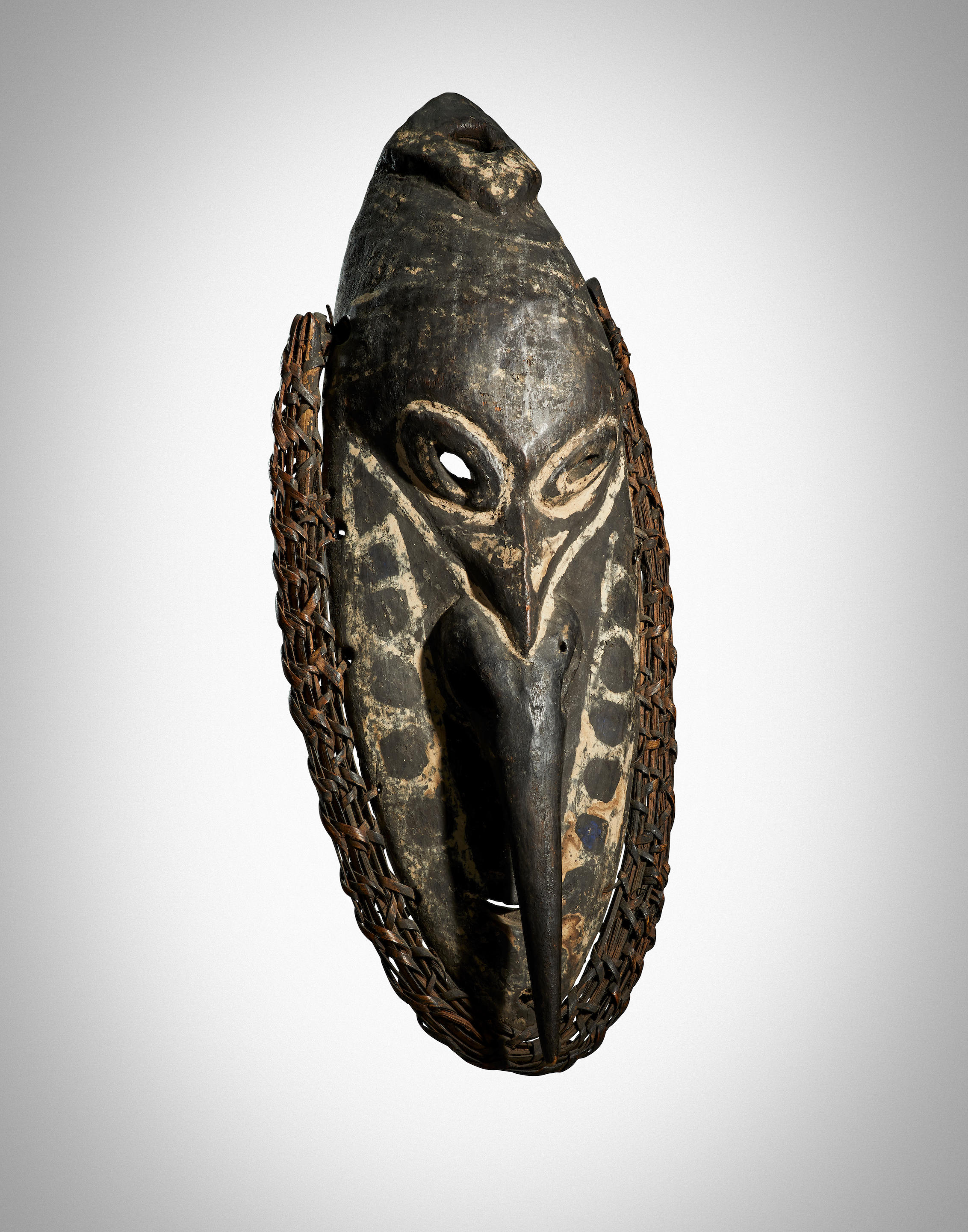
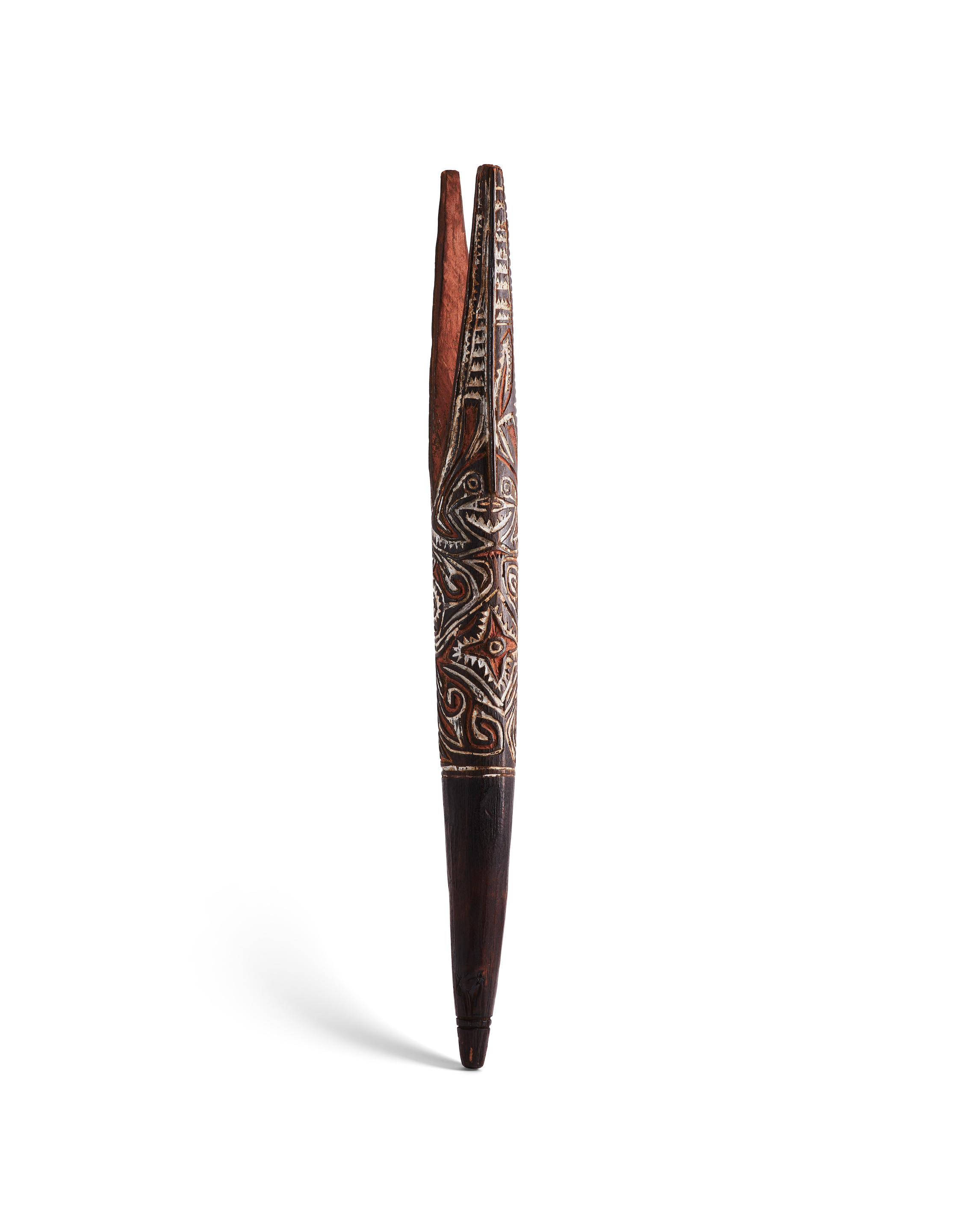
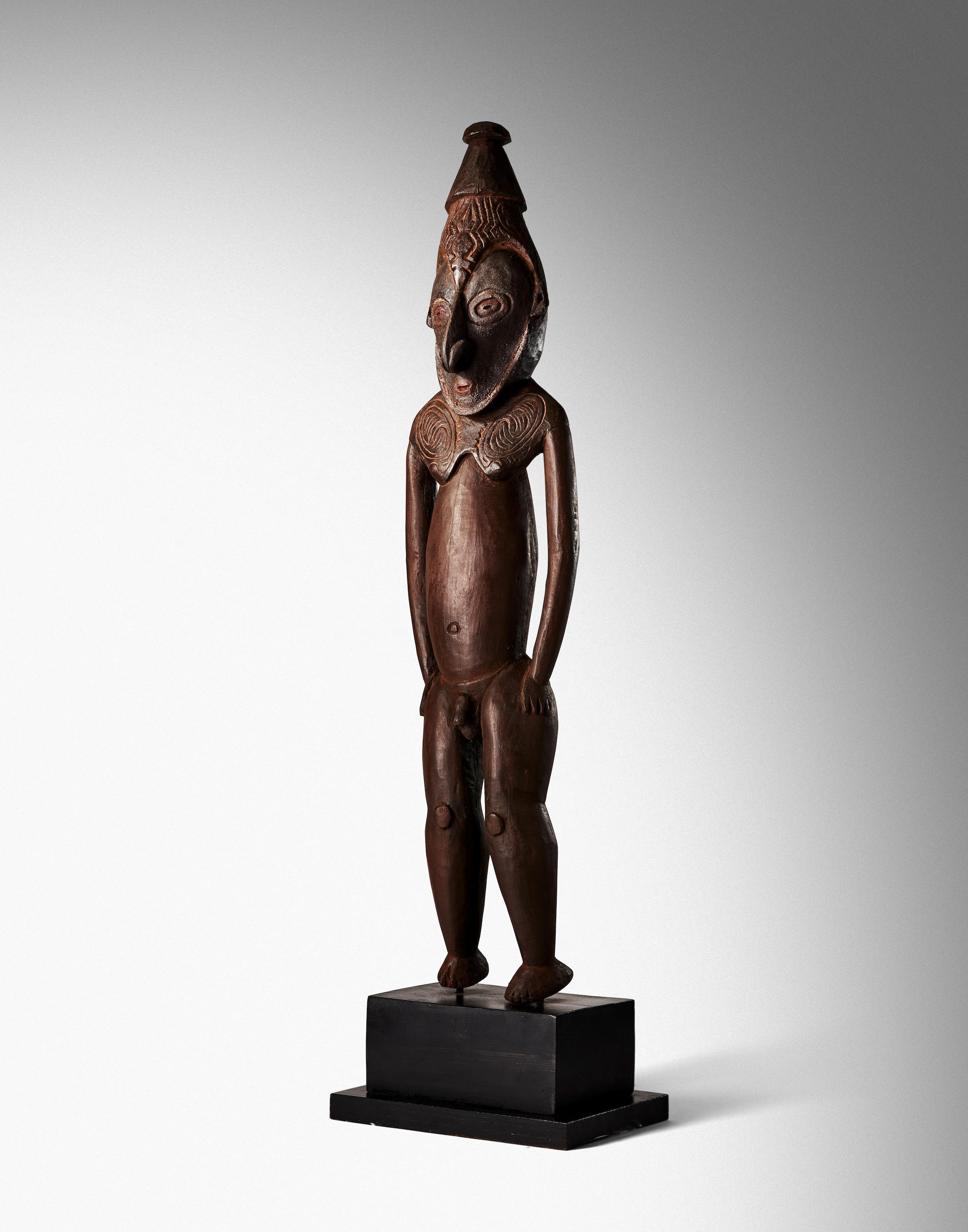

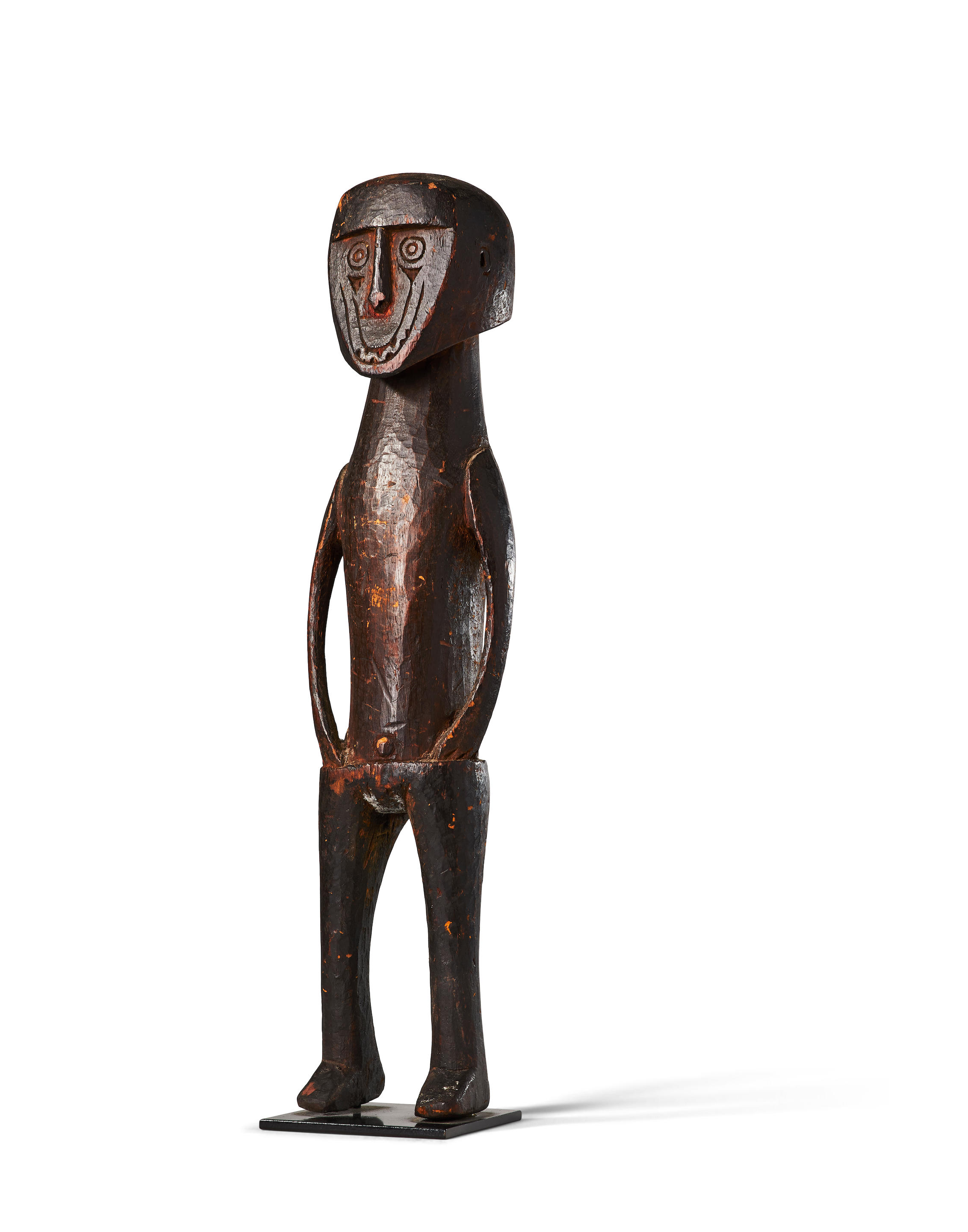
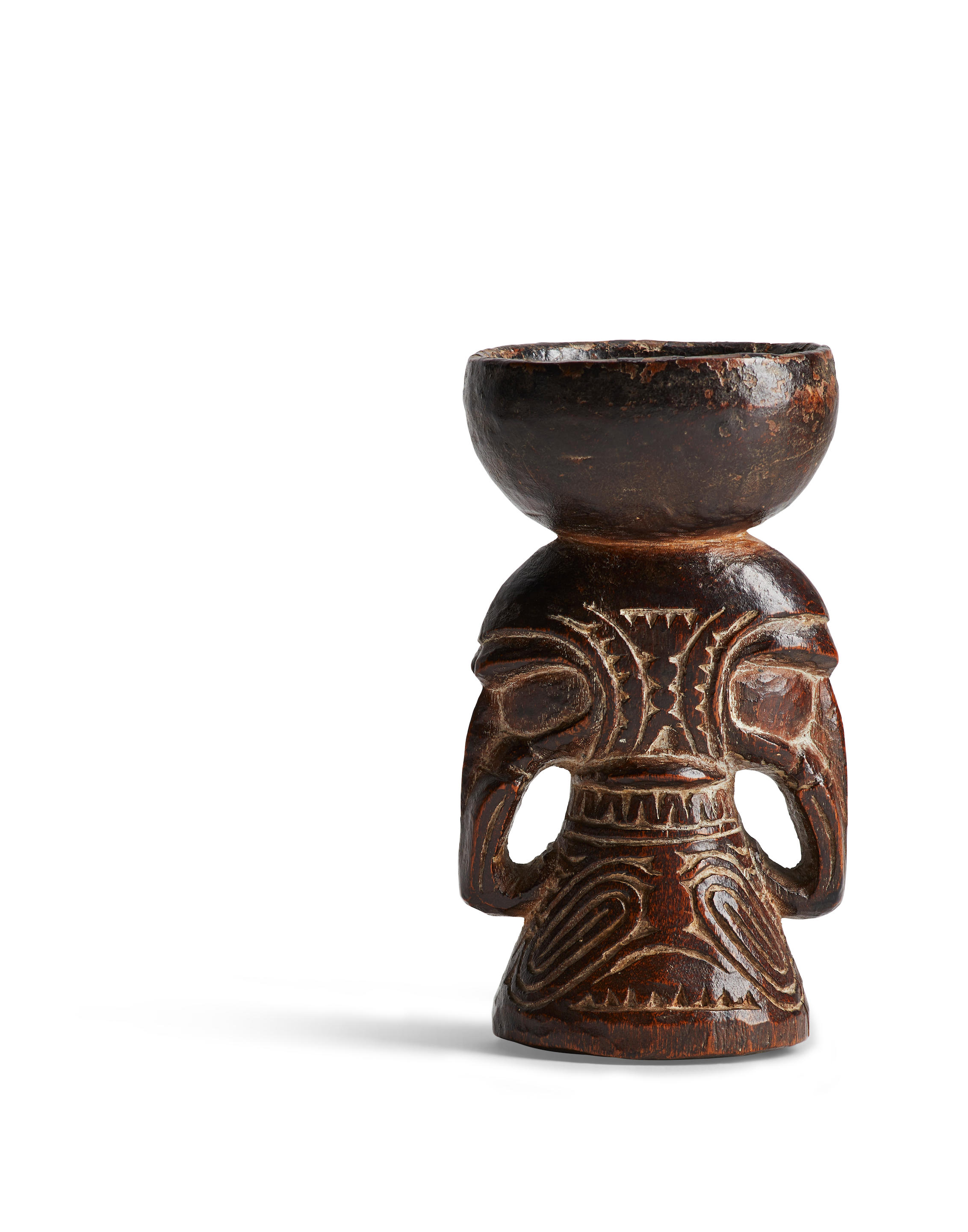
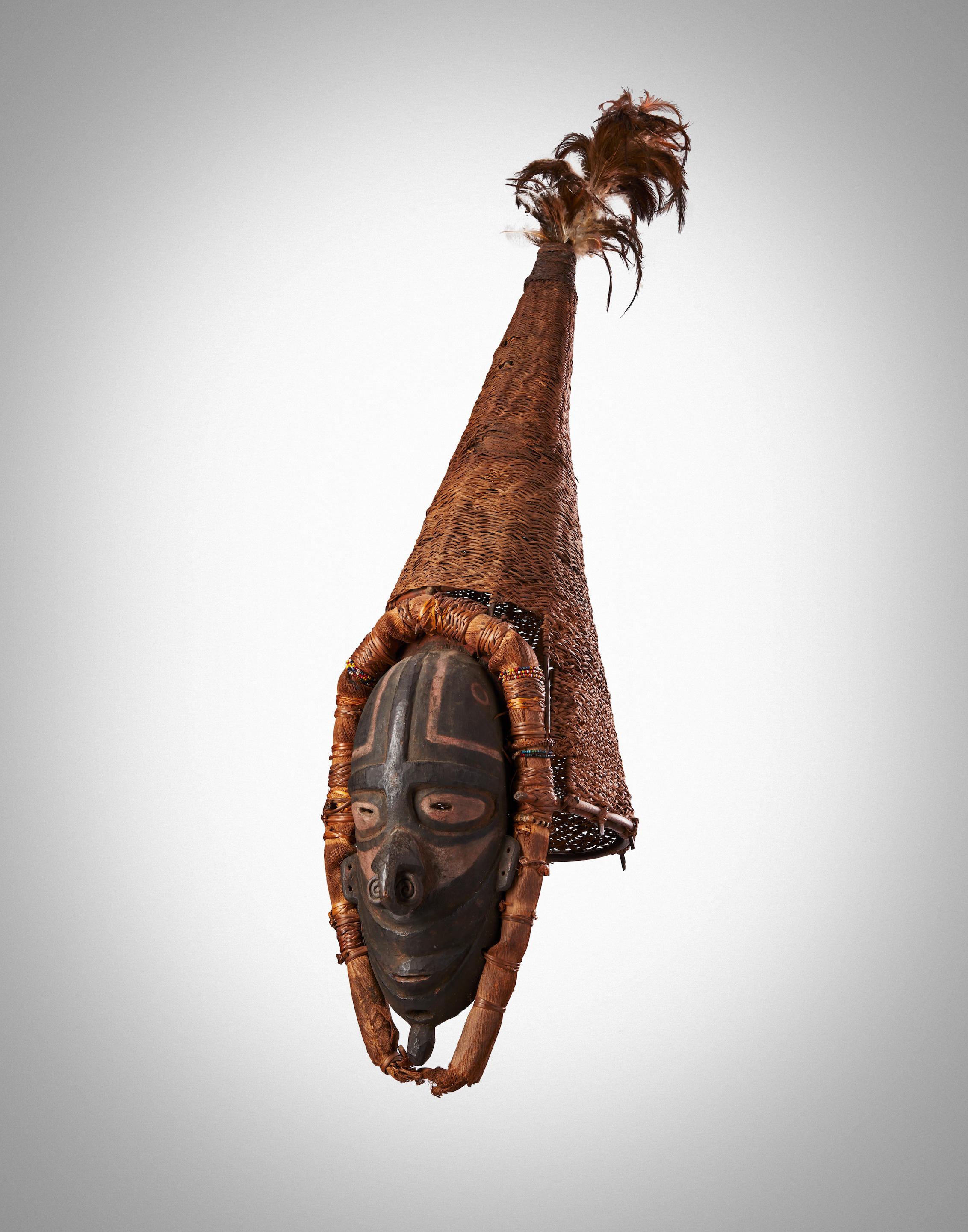
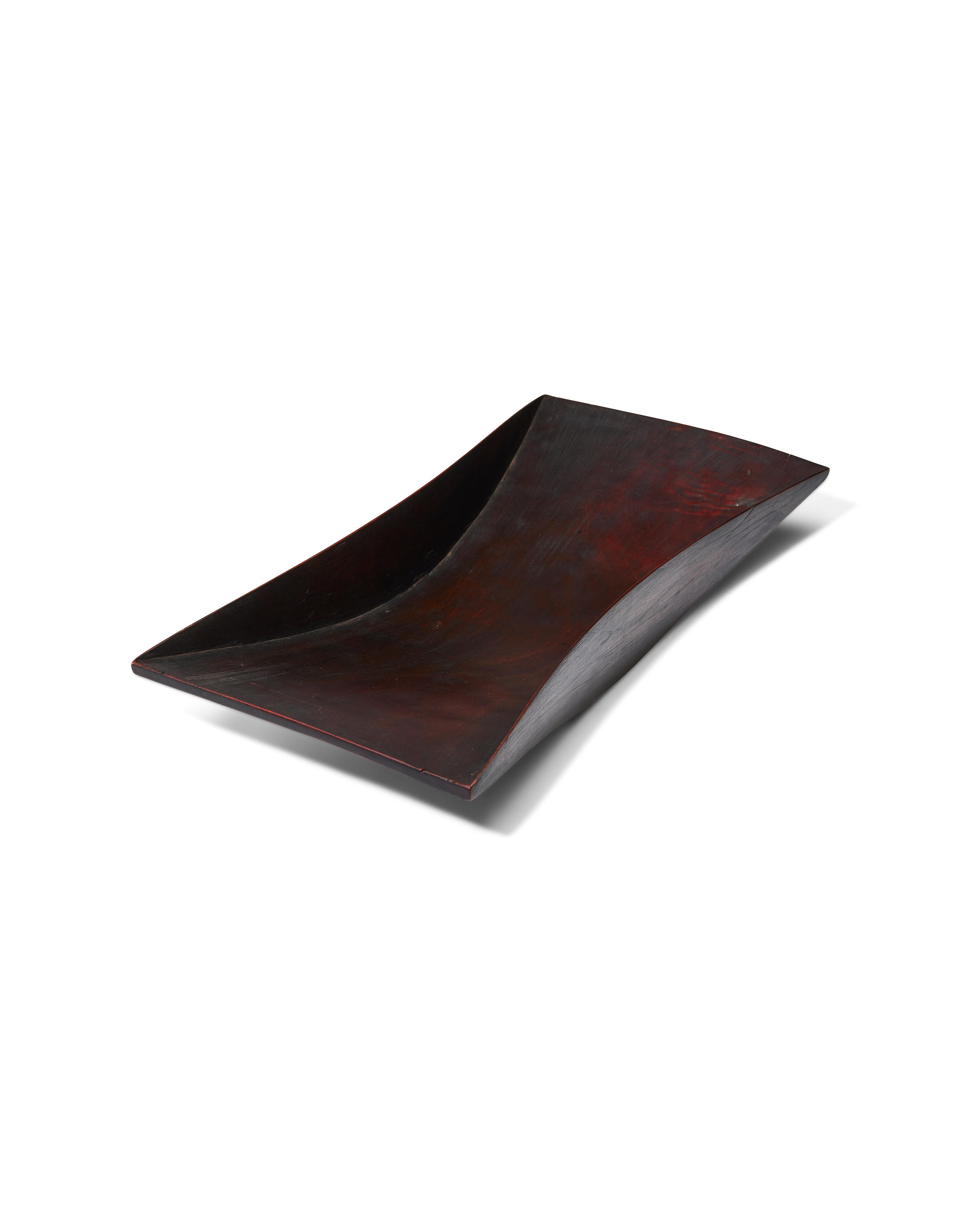
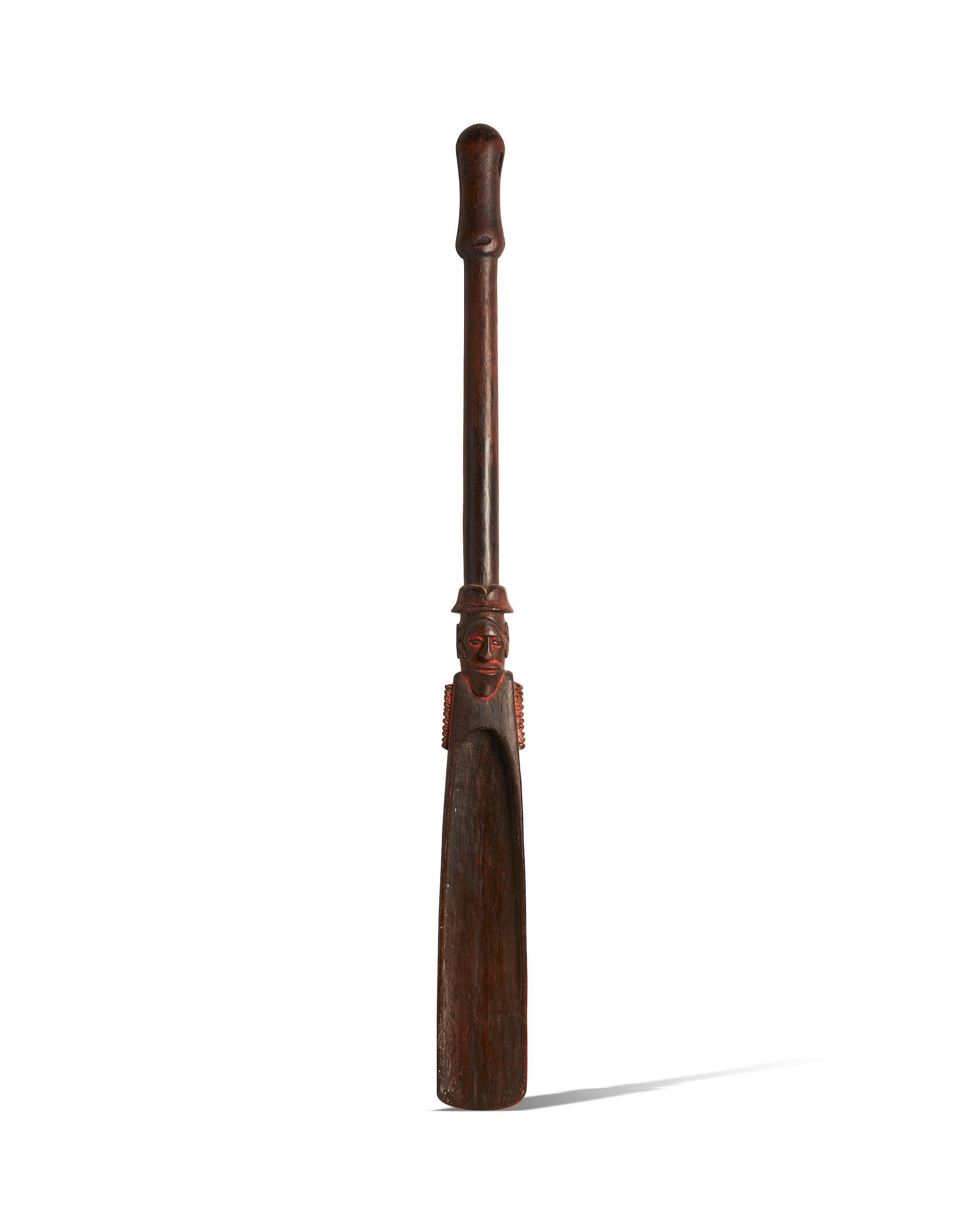
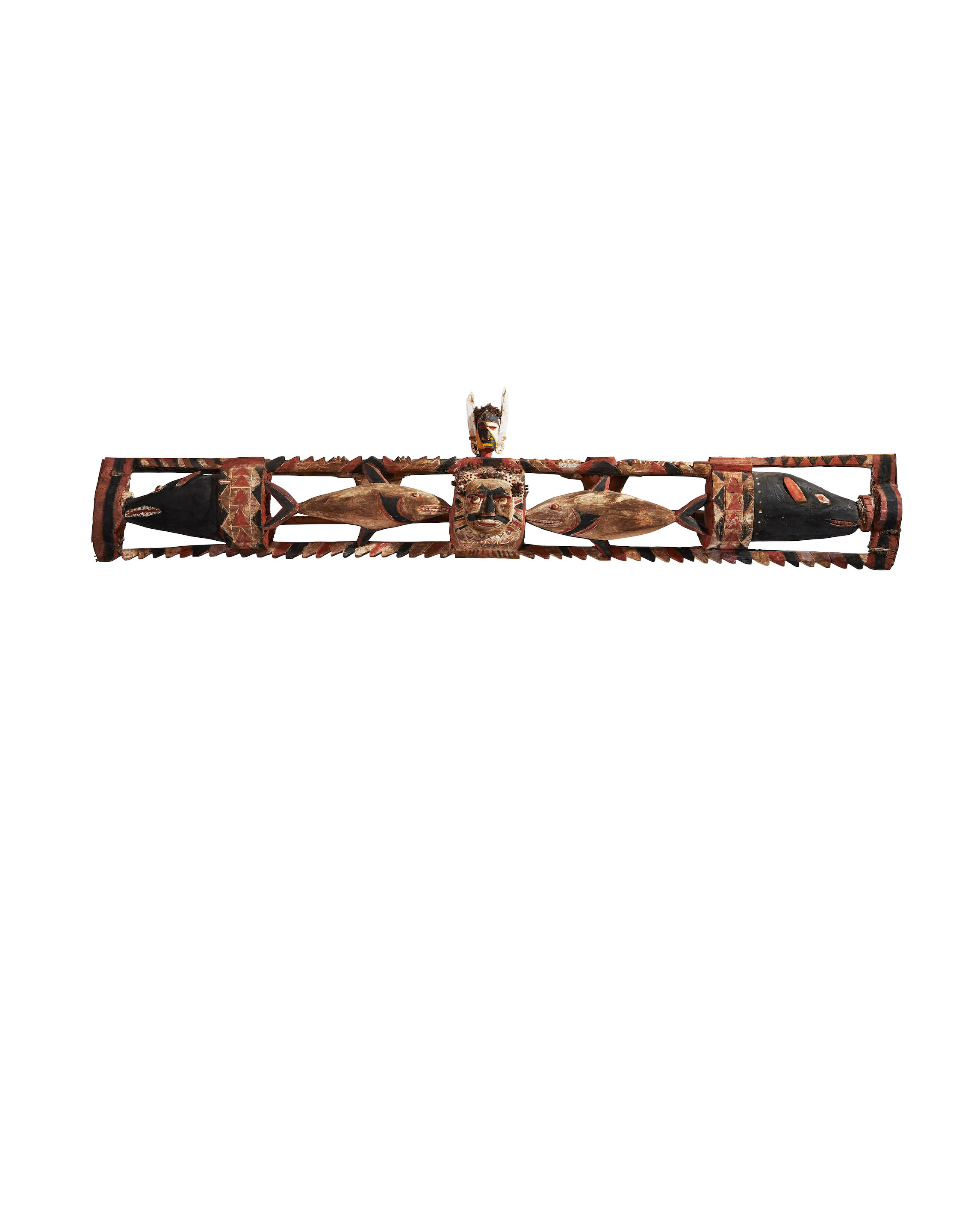
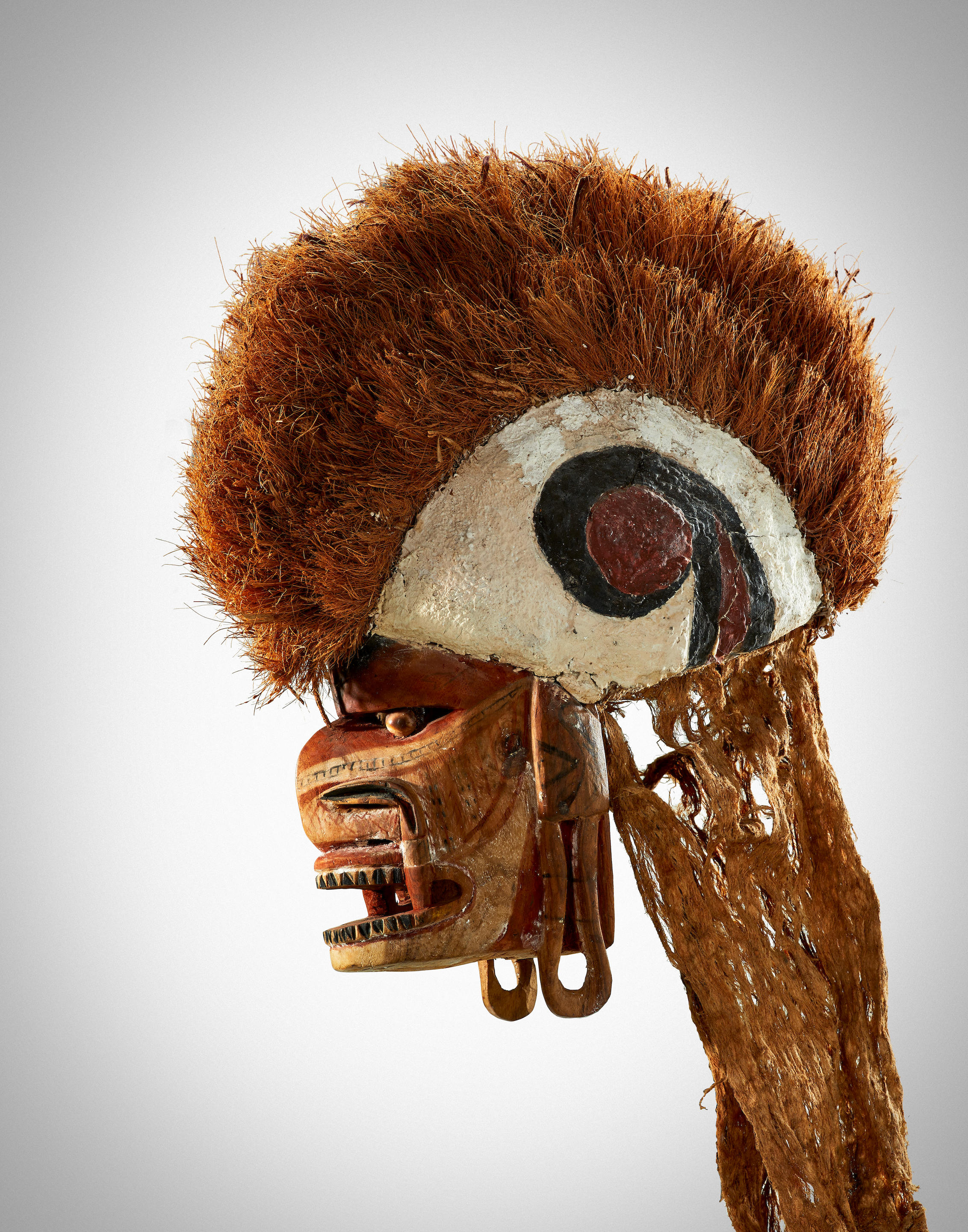
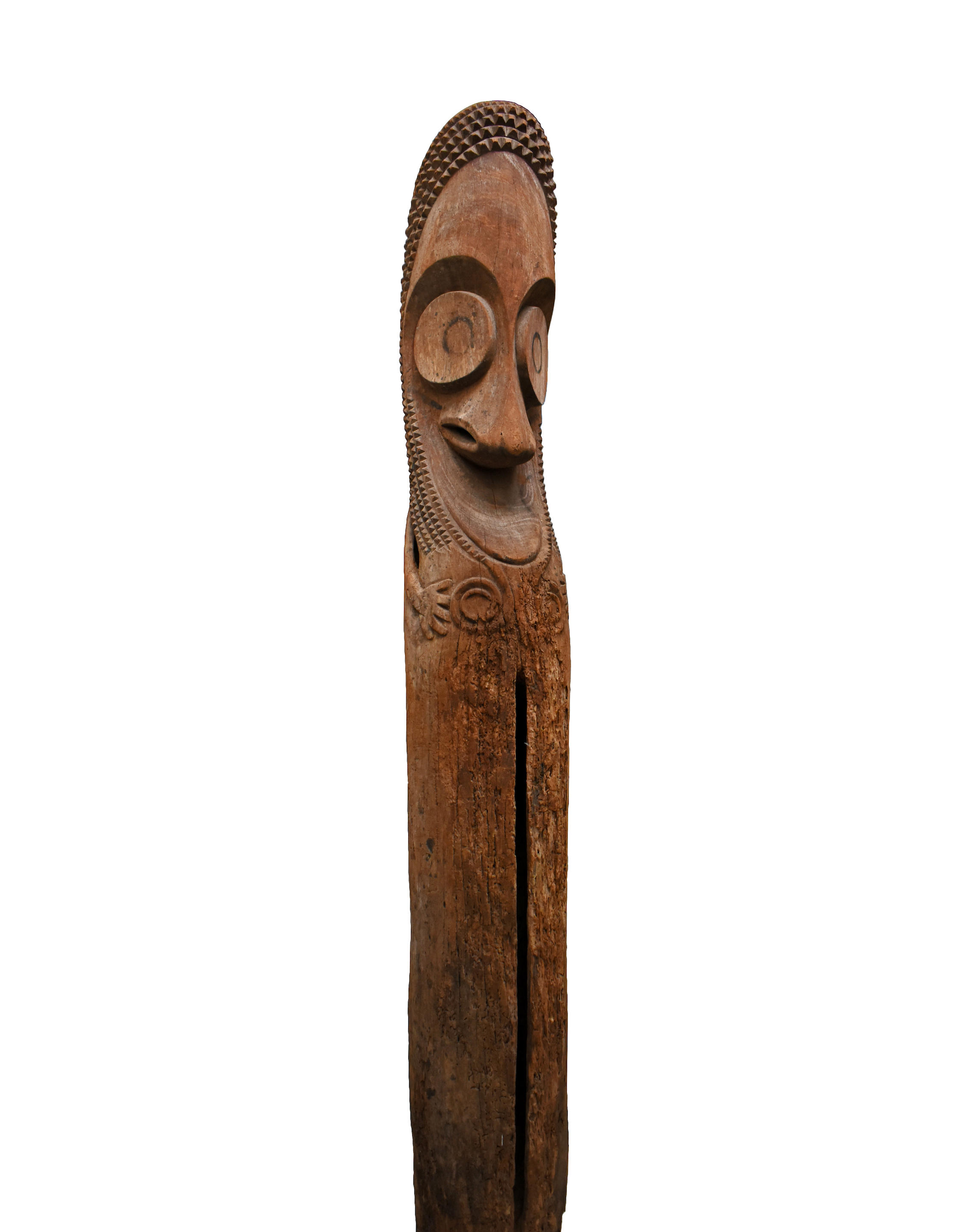
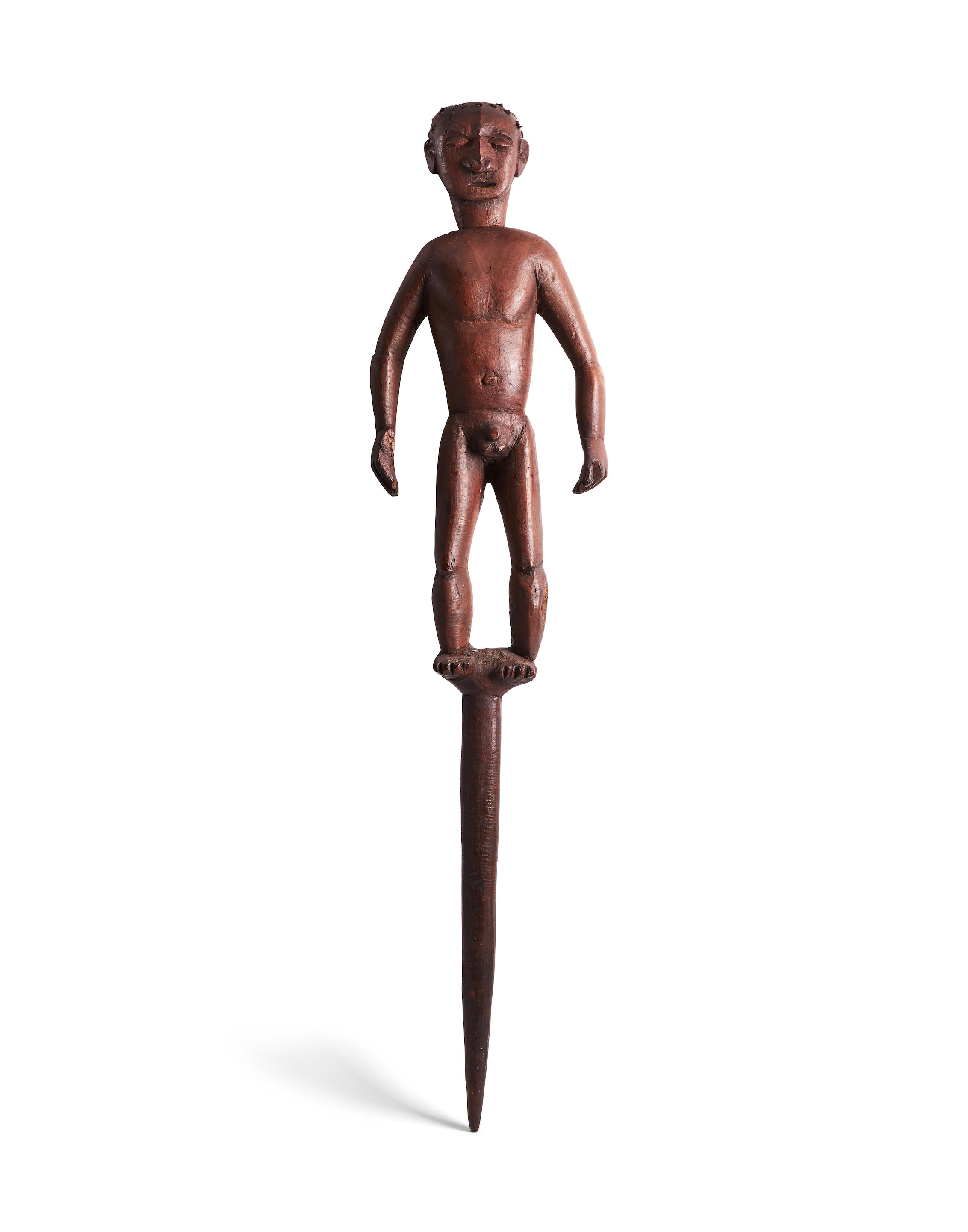
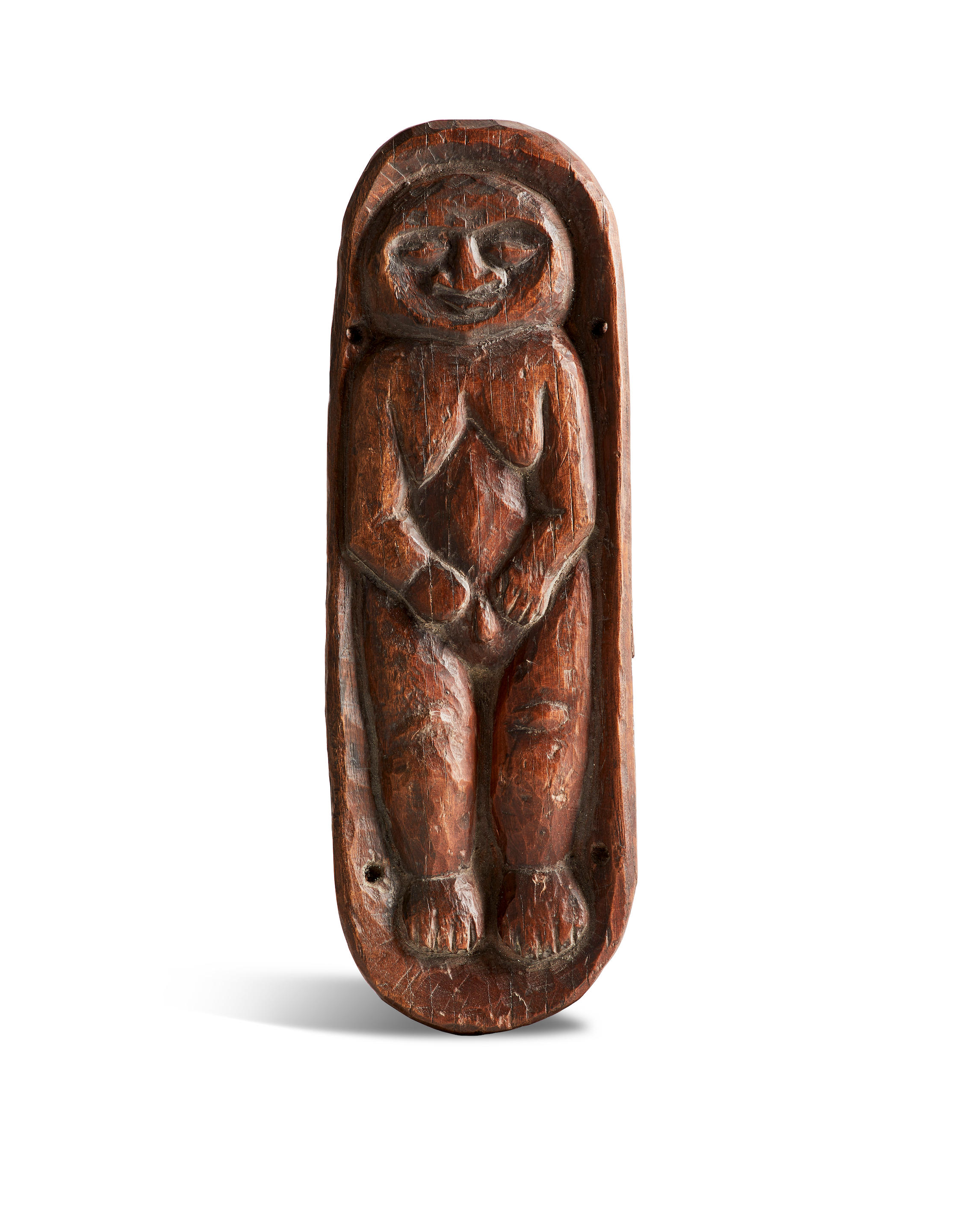
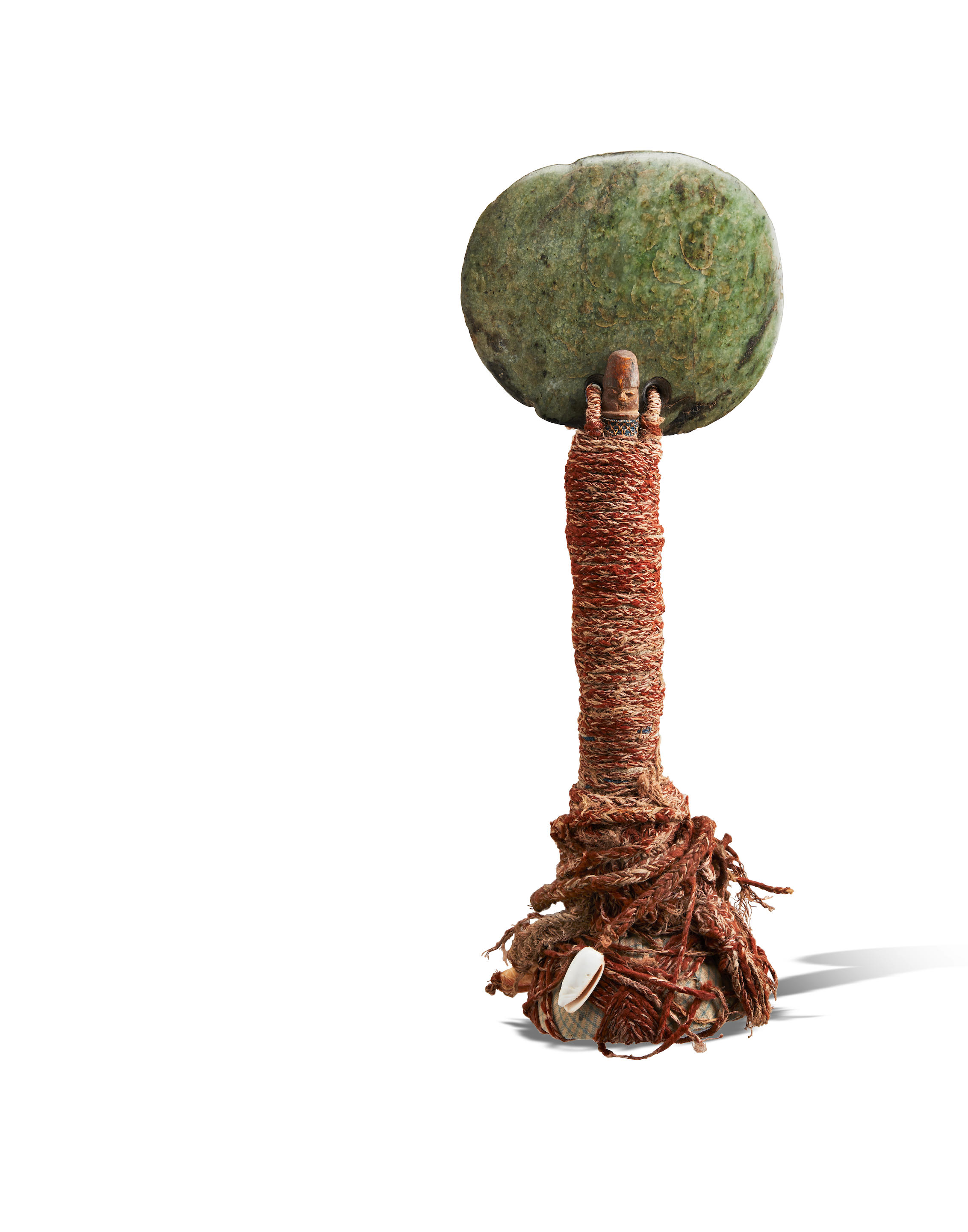
Try LotSearch and its premium features for 7 days - without any costs!
Be notified automatically about new items in upcoming auctions.
Create an alert